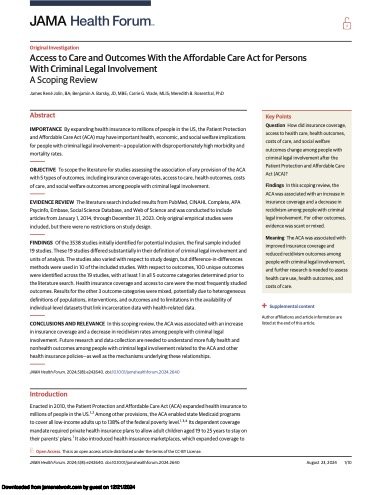By Lars Trautman
Traditional norms hold that a prosecutor’s role effectively ends with the conviction and sentencing of a defendant. After all, that is the point at which the prosecution is complete. Future decisions related to the defendant are generally the province of various correctional officials unless and until the individual becomes a defendant once again. Accordingly, when taken at all, postconviction prosecutorial action is frequently reactive and limited in nature, with the conditions of the correctional facilities, community supervision and reentry systems relegated to a secondary or tertiary concern. Yet, such a system threatens to undercut the prosecutor’s own aims and misses a valuable opportunity to improve the justice system. The source of this prosecutorial reserve is decidedly not because these post-conviction elements of the justice system are working well and do not need additional support. In many cases, they are not. Jails and prisons are frequently the subject of lawsuits and news stories decrying their conditions and, unsurprisingly, recidivism rates for those ultimately released remain relatively high. Likewise, many probation and parole systems are in such a state of disarray that some defendants actually prefer incarceration as the lesser of two evils. A host of literature has similarly documented the travails of those with a criminal record who attempt to enter the workforce, find housing or engage in any number of other basic life activities. At the same time, a steady trickle of exonerees, including a few who actually pleaded guilty, suggests that even the conviction itself is not the ironclad reflection of truth and justice that it is hoped to be. This culture of noninvolvement and aversion to action on post-conviction issues does not stem from an inability to act on the part of prosecutors. In fact, in most jurisdictions, the law requires them to participate in various post-conviction proceedings such as expungement requests, or permits them to in the case of parole hearings. Further, the prosecution power itself grants prosecutors the ability to reach into jails and prisons to potentially curb abuses and even play an active role in community supervision proceedings in many states. Too often, however, prosecutorial engagement in each of these areas is limited narrowly to the necessities of the case at hand with little attention paid to broader issues. In light of this, the present study will delve into how prosecutors can aid themselves and the wider justice system through post-conviction actions. This will include an examination of why they should adopt a more nuanced and often assertive post-conviction role, as well as the actions they can take after the conviction has entered to help achieve these farther reaching goals. Specifically, it will analyze opportunities to act with respect to the conviction itself, conditions of incarceration, community supervision systems, parole hearings, expungement processes and outreach to directly impacted individuals. It will conclude with a reflection on what more concerted prosecutorial post-conviction actions might mean for prosecutors and the justice system as a whole.
R STREET POLICY STUDY NO. 194 February 2020
Washington, DC: R Street, 2020. 6p.



















